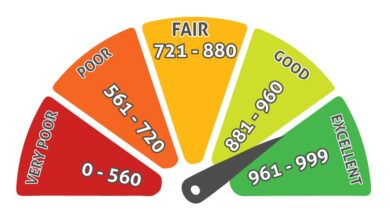Team Disquantified: Redefining Collaboration in the Modern Workplace

In today’s rapidly evolving professional landscape, organizations constantly explore innovative ways to structure teams, boost productivity, and drive results. One emerging concept gaining attention in forward-thinking companies is Team Disquantified. Though it may sound unconventional, this model offers a revolutionary approach to team dynamics, breaking away from rigid hierarchies and static roles. In this comprehensive article, we’ll explore what Team Disquantified means, why it matters, its origins, how it’s being implemented, the benefits and challenges of the model, and how it compares to traditional team structures. By the end, you’ll deeply understand this concept and how it could shape the future of work.
What Does Team Disquantified Mean?
The Team Disquantified refers to a team structure not limited or defined by fixed quantifiable roles, ranks, or responsibilities. It represents a flexible, fluid system of collaboration in which team members are assigned based on skills, adaptability, and the moment’s needs rather than static job titles or traditional hierarchy.
It “dis-quantifies” the team by removing rigid quantifications like job grades, departmental boundaries, or linear reporting. Instead, team members are viewed as multidimensional assets whose contributions are evaluated in context, not constrained by predefined roles.
Etymology of the Term
The word “disquantified” can be broken down as follows:
- “Dis” — a prefix meaning removal or reversal.
- “Quantified” — defined or measured by quantity or number.
“disquantified” implies removing numerical or categorical limitations, especially in how people are defined within a team.
Origins of the Team Disquantified Model
The concept has roots in agile methodologies, cross-functional teams, and human-centered design, where roles are often dynamic and based on iterative progress. It also finds resonance in the holacracy movement, a decentralized management style that distributes authority across self-managing teams.
One of the earliest uses of Team Disquantified in this context was seen in innovation hubs and design studios, where the traditional labels of “manager,” “designer,” or “developer” were often blurred. Here, collaboration flowed across boundaries, focusing on outcomes rather than titles.
Why Is Team Disquantified Relevant Today?
The Rise of Remote and Hybrid Work
As remote work becomes standard across industries, organizations are rethinking how teams are built and managed. Without physical proximity, team roles and responsibilities must be more adaptable. Team Disquantified offers a framework that supports decentralized, asynchronous work without relying on rigid structures.
The Demand for Agility
Markets and technologies evolve at breakneck speed. Businesses must pivot quickly to remain competitive. A disquantified team can reorganize fluidly in response to change, deploy specialized skills where needed, and innovate without bureaucratic delays.
Employee Empowerment
Younger generations entering the workforce seek autonomy, purpose, and continuous learning. In a disqualified model, employees aren’t stuck in silos—they’re empowered to grow across multiple disciplines, contribute meaningfully, and shape their career paths dynamically.
Core Principles of Team Disquantified
Skill-Centric Team Formation
Instead of assigning people to teams based on department or job title, this model relies on matching skills to project needs. A data analyst, for example, might collaborate with a UX designer and a marketing strategist on a short-term initiative, even if they report to different departments.
Role Fluidity
Team members are not bound to a single role. For example, a content strategist might take on a leadership role in one project and serve as a researcher in another. The goal is to encourage diverse contributions and eliminate unnecessary hierarchy.
Outcome-Driven Collaboration
Rather than being evaluated on how well they “stick to their role,” individuals are judged based on outcomes, results, and impact. This encourages a mindset of shared ownership and accountability.
Temporary Leadership
Leadership is situational and can shift depending on the task. If one team member has domain expertise in a particular area, they might temporarily lead that segment, regardless of their formal title.
Benefits of a Disquantified Team Structure
Greater Flexibility and Adaptability
Teams can pivot quickly to address new challenges or capitalize on emerging opportunities.
Better Talent Utilization
Team members contribute based on their unique strengths, not just their job description.
Higher Employee Engagement
The model promotes learning, creativity, and autonomy—key job satisfaction and retention drivers.
Faster Innovation
Cross-functional collaboration accelerates the creative process and brings diverse perspectives to the table.
Reduced Bureaucracy
Without rigid hierarchies, decisions can be made more quickly and efficiently.
Challenges and Criticisms
Despite its advantages, the Team Disquantified model comes with potential pitfalls.
Role Ambiguity
Some individuals may struggle with unclear roles or responsibilities, especially those who thrive under structure.
Accountability Issues
Without formal hierarchies, assigning ownership or evaluating performance objectively can be difficult.
Onboarding Complexity
New team members may struggle understanding their place in a fluid team environment.
Leadership Resistance
Traditional managers may feel threatened by the flattening of authority and struggle to adapt.
Real-World Examples of Disquantified Teams
IDEO
IDEO, a design and innovation firm, has long practiced a fluid team structure, forming teams based on project needs rather than roles.
Spotify’s Squad Model
Spotify’s internal “squad” structure emphasizes autonomy, self-management, and flexible team membership, mirroring disquantified ideals.
Valve Corporation
Known for having no formal bosses, Valve allows employees to join any project they choose—an extreme version of team disqualification.
How to Implement a Team Disquantified Model
Thinking about experimenting with this structure? Here are practical steps:
Conduct a Skills Inventory
Map out the skills, experiences, and interests of all employees. This becomes the foundation for assembling cross-functional teams.
Create Project-Based Pods
Build small, mission-driven teams tasked with solving specific challenges. Encourage flexibility in who leads and how work is divided.
Set Clear Goals and Metrics
Defining clear KPIs, deadlines, and deliverables is crucial in a flexible model to prevent chaos.
Emphasize Communication
Encourage open channels, regular check-ins, and transparent decision-making to maintain alignment.
Offer Training and Mentorship
Provide support to help team members thrive in non-traditional roles. Include modules on agile thinking, peer leadership, and adaptability.
Disquantified vs. Traditional Teams: A Comparison Table
| Feature | Traditional Team | Team Disquantified |
|---|
| Structure | Hierarchical | Flat / Fluid |
| Role Definition | Fixed | Dynamic |
| Leadership | Permanent | Situational |
| Collaboration | Department-Based | Cross-Functional |
| Evaluation Criteria | Role Adherence | Outcome and Impact |
| Flexibility | Low | High |
| Innovation Potential | Moderate | High |
Conclusion: The Future of Work Is Disquantified
The Team Disquantified model represents a bold reimagining of team structure in the digital age. While it may not replace traditional hierarchies overnight, it offers a compelling alternative for organizations seeking speed, innovation, and engagement.
Companies can activate new levels of creativity and agility by focusing on people’s potential rather than their titles. As more businesses experiment with flexible structures, expect the idea of disquantified teams to move from the margins to the mainstream.
Frequently Asked Questions (FAQs)
Is Team Disquantified the same as Agile?
Not exactly. While both models value adaptability and collaboration, team disquantified focuses more on removing rigid role definitions, while Agile emphasizes iterative development processes.
Can traditional companies adopt this model?
Yes, but it may require a cultural shift, leadership buy-in, and a rethinking of performance evaluation.
What industries benefit most?
Technology, design, marketing, and startups are early adopters, but the principles can be applied across sectors.
You May Also Read: The Future of Business Efficiency: How VHSGJQM is Revolutionizing Workflow Management




